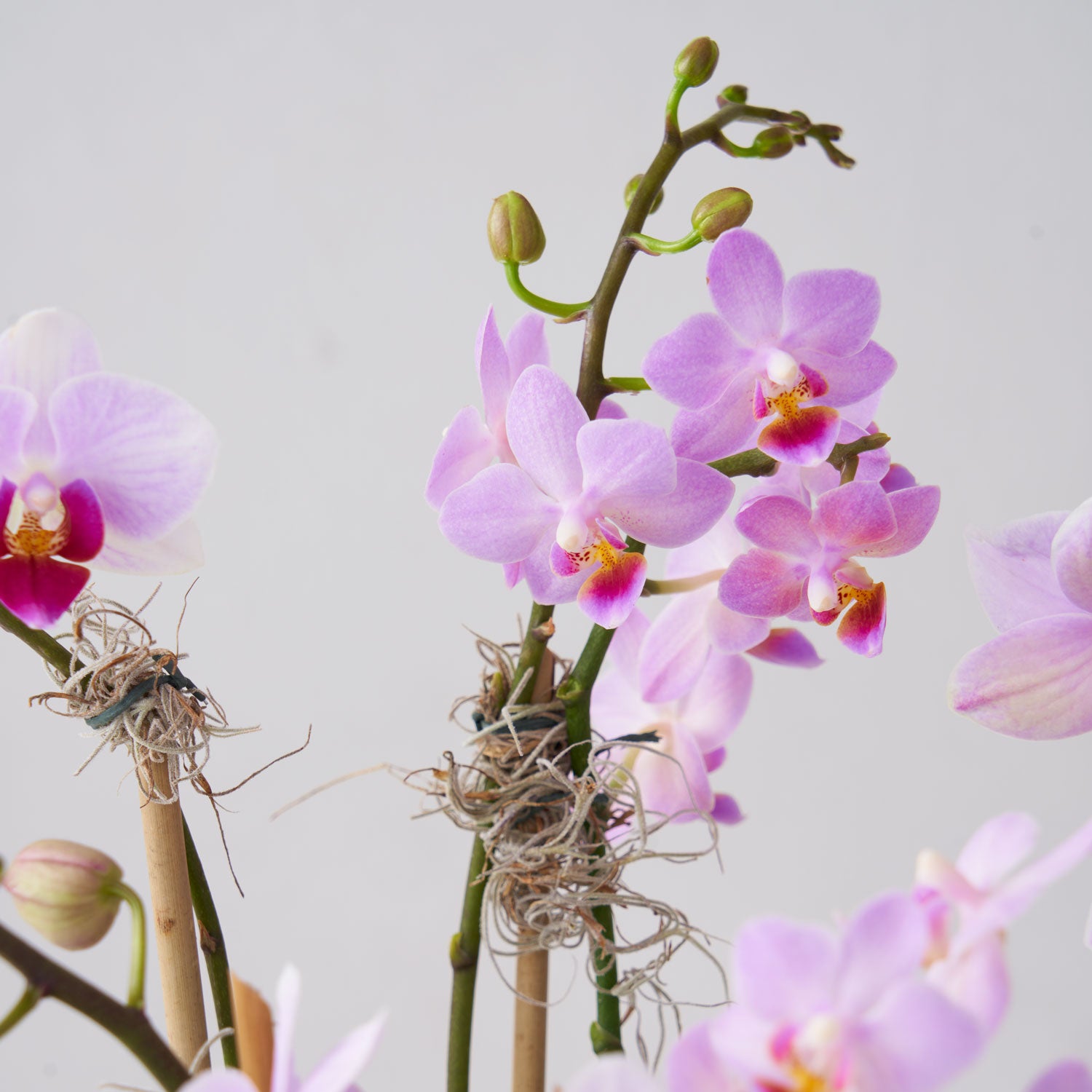Learn the secrets to reviving wilting roses and bringing your flowers back to life. This guide will show you simple steps to rescue your blooms and keep them vibrant.
Roses are a classic symbol of love and beauty, but even the most vibrant blooms can wilt prematurely. In this guide, we'll explore the common causes of wilting roses and provide you with simple, effective solutions to revive your flowers and keep them looking their best.
If you’re wondering, “Why are my roses wilting?” or “Can you revive wilted roses?”— you’ve come to the right place. This guide explains the common causes of wilting roses and walks you through the simple steps to fix wilting roses, prevent further damage, and keep your rose bouquet looking its best longer.
If I had a dollar for every time I’ve been asked, “Why are my roses wilting?” I’d probably be living on a private island, sipping champagne while watching the sun rise and set!
But, let’s get to the heart of the matter: the rose head wilts when it’s not getting enough water from the vase. The reasons behind this can vary, and that’s exactly where we begin. a private island, sipping champagne while watching the sun rise and set!
How We Prevent Wilting Roses at Westmount Florist
When roses arrive at our shops, the initial processing is crucial to extending their lifespan. We start by ensuring the buckets are completely bacteria-free. This involves washing them thoroughly with a special cleaning solution, hot water, and a good scrub. Then, we fill the bucket with lukewarm water mixed with floral preservatives.
Next, we carefully strip the leaves from the stems, making sure none will sit below the water line, as submerged leaves can cause bacteria to grow. We also remove the thorns, then cut the stems at an angle and immediately place them in the prepared bucket of water.
You now know how we process our roses to ensure they stay fresh, but you might still be wondering: Why are my roses wilting?
Let’s dive deeper.
Why Do Roses Wilt?
The simple answer: the rose head wilts because the stem isn’t drawing water up to the head. Here are the five main reasons why this happens:
-
Dehydration
If roses are not given enough water, they will begin to wilt. This can happen if they’ve been sitting in an empty vase or exposed to dry air for too long.
-
Bacteria in the water
Bacteria that grow in the water can clog the stem and prevent the rose from absorbing water. This is why it's crucial to change the water frequently and clean the vase.
-
Temperature extremes
Roses are sensitive to temperature changes. Exposure to extreme heat or cold can stress the flowers and cause wilting.
-
Ethylene gas
Ethylene gas, which is released by ripening fruits and vegetables, can cause roses to wilt faster. Keep your roses away from fruit to avoid this issue.
-
Air blockages in the stem
If air enters the stem, it can block water from reaching the head. This is why it’s essential to trim the stems properly and keep the bottom submerged in water.
Think about it for a moment — how can the rose nourish itself if the stem is blocked?
Always re-cut your stems! This simple step is crucial to keeping your roses hydrated and fresh.
How to Revive Wilting Roses
If your roses have started to wilt, don’t despair! Here’s how to revive them:
Step 1: Re-cut the stems underwater at an angle
To ensure the stems can absorb water properly, make a fresh cut underwater at a 45-degree angle. This prevents air from entering the stem, which could block water intake.
Step 2: Use a clean vase and fresh, lukewarm water
A clean vase is essential to prevent bacteria growth. Fill it with fresh, lukewarm water to help the roses hydrate.
Step 3: Add flower food to the water
Flower food contains nutrients that roses need to stay fresh longer. Add the recommended amount of flower food to the water for the best results.
Optional: Submerging the whole rose in water
For extreme wilting, you can submerge the entire rose, head and all, in water for a few hours. This method helps rehydrate the stem and petals quickly, but it’s only recommended for severe cases.
How to Prevent Wilting Roses
While it’s always helpful to know how to fix wilting roses, prevention is key. Here’s how to keep your roses fresh for as long as possible:
When you first receive the roses
As soon as you receive your roses, remove the thorns carefully and strip the leaves that will be submerged in water. This prevents bacteria build-up. Always place roses in clean, fresh water immediately after cutting the stems.
Choose the right vase
Choose a vase that’s large enough to comfortably hold the roses and tall enough to keep the stems submerged in water. Also consider using a vase made of glass or ceramic to minimize the risk of bacterial growth.
Change the water often
Change the water in the vase every 2-3 days, and keep it filled to the appropriate level. Avoid placing the vase in direct sunlight, as this can cause the flowers to dehydrate more quickly.
Expert Tips for Choosing Long-Lasting Roses
At Westmount Florist, we carry certain rose varieties known for their durability and resistance to wilting. Here are some of our most popular varieties:

Hybrid Tea Roses:
While some hybrids can be delicate, certain varieties are designed for long-lasting freshness like our Bikini, Candlelight, Explorer, Free spirit, Mondial, and Piacere roses. They are typically a high-centered flower with a long stem, making it a popular choice for bouquets and arrangements.

Spray Roses:
These roses (often called sweetheart roses) have multiple small blooms on each stem, making them more resilient than standard roses. Spray roses are often featured in both our arrangements, bouquets and wrist corsages.










